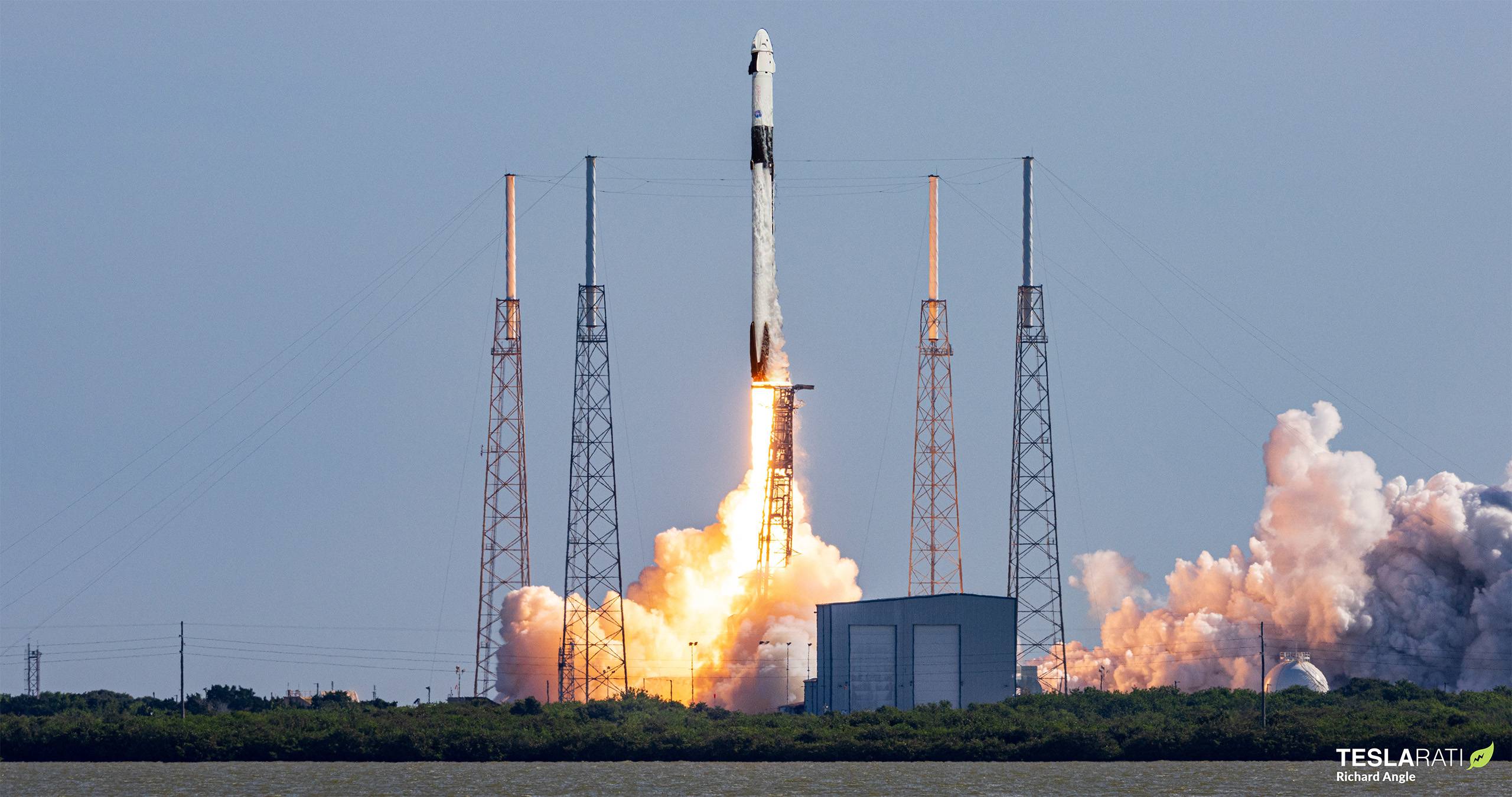
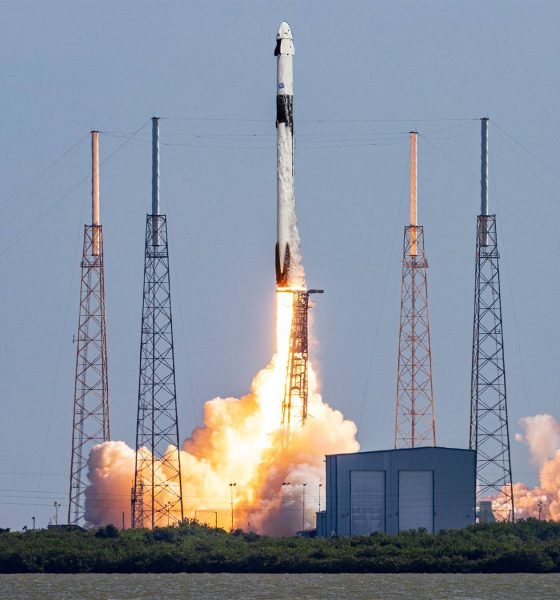
News
SpaceX’s backup Dragon launch pad on track for 2023 debut
SpaceX has begun building a backup launch pad for its Cargo and Crew Dragon spacecraft and says the facility could be ready for use as early as fall 2023.
Reuters first revealed those plans in June 2022. They arose because NASA reportedly told SpaceX it was worried that the company’s first Florida Starship launch site – colocated at the only pad currently able to launch SpaceX Dragon spacecraft – could add too much risk. In September 2022, NASA and SpaceX acknowledged plans to modify LC-40 for Dragon launches and indicated that both parties had decided to proceed.
Four months later, SpaceX and NASA have provided another press conference update. Officials confirmed that construction is already partially underway and reported that LC-40 could be ready to support its first Dragon launch less than a year from now.
The update that's rolling out to the fleet makes full use of the front and rear steering travel to minimize turning circle. In this case a reduction of 1.6 feet just over the air— Wes (@wmorrill3) April 16, 2024
Because Boeing’s comparable Starliner capsule is years behind schedule and still unqualified to launch humans, NASA has relied almost exclusively on SpaceX’s Crew Dragon to launch its astronauts to the International Space Station (ISS) since 2020. Starliner should be ready to supplement Crew Dragon’s operational astronaut launches by the end of 2023 or early 2024, alleviating some of that pressure.
NASA, however, chose to develop two spacecraft to guarantee that one spacecraft would likely be available if the other was grounded for any reason. Adding the possibility that a giant, new, experimental rocket (Starship) could potentially halt all SpaceX Dragon launches in one fell swoop was apparently one bridge too many for the agency.
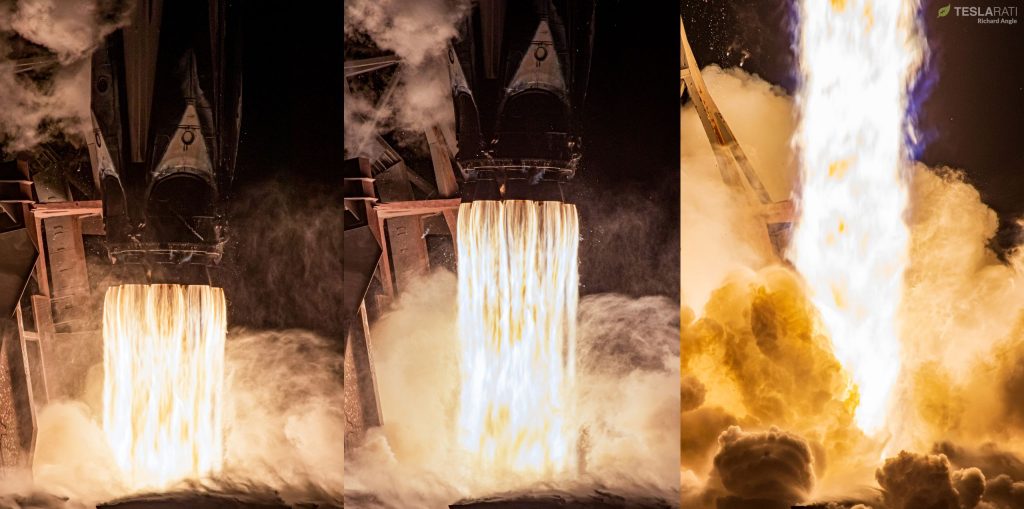
SpaceX’s answer to the problem was about as simple, elegant, and cheap as possible. The company has two operational Falcon launch pads in Florida, and it proposed to modify the second pad. SpaceX’s Cape Canaveral Space Force Station (CCSFS) LC-40 pad is located on a secure military base and has an even longer history of successful Falcon 9 launches than Pad 39A. It also appears that its layout will allow SpaceX to add a Dragon access tower without requiring major redesigns or months of downtime.
LC-40 is SpaceX’s most productive launch pad by far, and the company intends to launch up to 100 times in 2023. It’s thus crucial that the pad remains as active as possible as it’s modified – a major challenge. A combination of luck and the fact that the launch pad is already operational is the only reason that’s possible.
Modifying SpaceX’s busiest pad
In theory, SpaceX needs to do relatively little to enable Dragon launches out of LC-40. Dragon spacecraft are processed for flight at a separate facility and only head to the pad once they’re ready to be attached to a Falcon 9 rocket. The biggest modification LC-40 needs is a launch tower, but SpaceX ironically has experience building giant towers in sections – and offsite – through Starship.
LC-40’s Dragon access tower requires far less complex plumbing and should be smaller and easier to prefabricate and assemble. Regulatory documents indicate that the new tower will stand 81 meters (265 feet) tall – almost a third shorter than the 110-meter-tall tower SpaceX modified at Pad 39A for the same purpose. LC-40 will also need a swinging access arm to connect the tower to Dragon’s hatch. That arm can also be constructed offsite, further reducing the amount of downtime required.
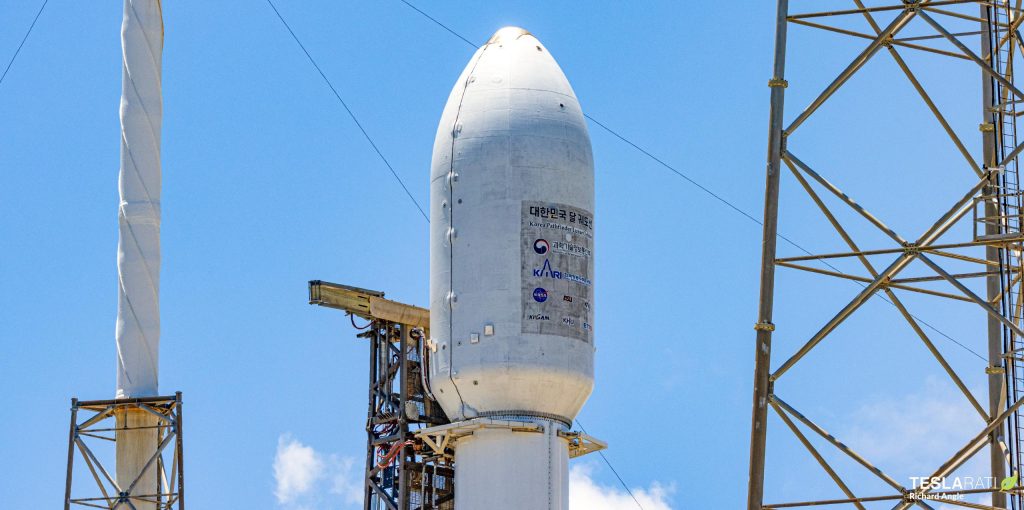
The most disruptive modifications may involve LC-40’s transporter/erector (T/E) device, which rolls Falcon 9 out to the pad, raises it vertical, holds it down with giant clamps; and hosts a maze of plumbing that fuels, pressurizes, and powers the rocket. The top of LC-40’s T/E is fitted with a brace designed to support Falcon payload fairings. In comparison, 39A’s T/E was designed with swappable ‘heads’ that allow SpaceX to switch between Dragon and fairing configurations in a matter of days. The top of LC-40’s T/E also appears to be somewhat removable, but SpaceX may still have to halt launches for a few weeks to get the T/E up to spec and modified for Dragon.
SpaceX says that LC-40 will be ready to support its first Dragon launch as early as fall (Q4) 2023. Its first Dragon mission will carry cargo to the ISS, meaning that the tower, arm, and pad will not need to be immediately human-rated. In theory, SpaceX could even launch Cargo Dragon 2 from LC-40 without a tower or arm, as the only purpose of the tower during uncrewed missions is to load volatile cargo at the last possible second. SpaceX could even revert to a practice that dates back to its original Dragon 1 spacecraft and devise a method to late-load cargo while Falcon 9 and Dragon are still horizontal.
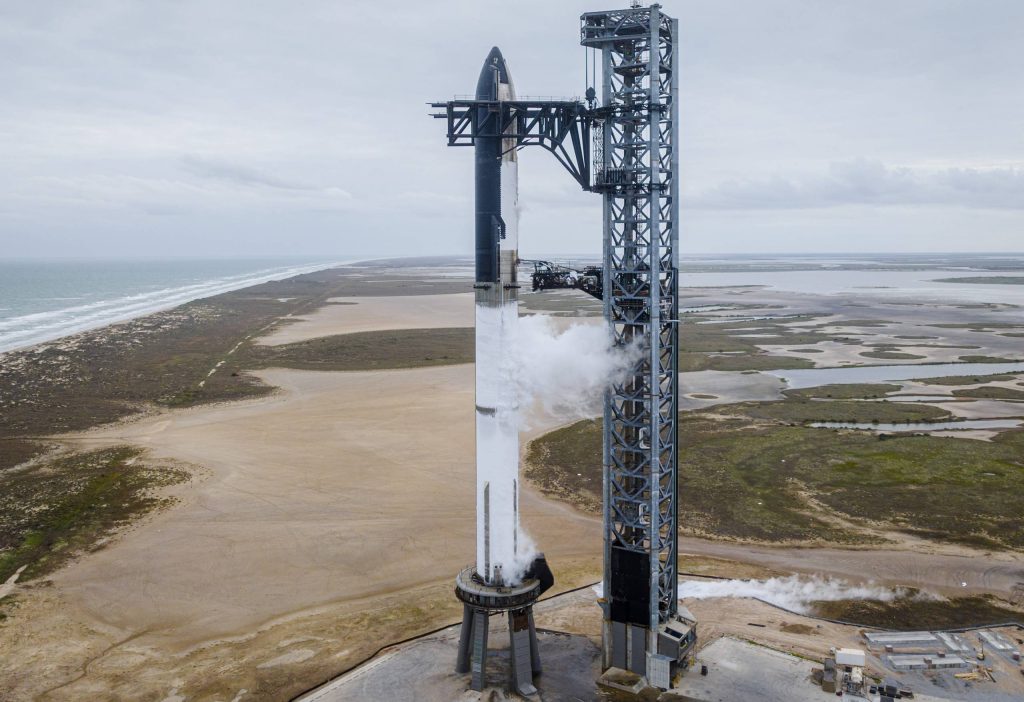
The tower and access arm are only essential for Crew Dragon launches, during which astronauts must board the spacecraft a few hours before liftoff. More importantly, the same arm and tower would be used to escape Dragon and Falcon 9 in case of a minor emergency. NASA requires an escape (egress) system to human-rate a launch pad and rocket. SpaceX met that requirement at Pad 39A with a “slidewire basket” system that carries astronauts to a concrete bunker several hundred feet away from the rocket. Before LC-40 can be human-rated, SpaceX will likely need to build the same basket-and-bunker system or come up with a viable alternative.
Once complete, SpaceX will have two pads capable of supporting all Crew and Cargo Dragon launches. With that redundancy in place, NASA should be far more open to regular launches of SpaceX’s next-generation Starship rocket out of Pad 39A. Access to multiple pads will likely be essential for Starship to complete NASA’s Human Landing System (HLS) contracts, which will culminate in the giant rocket sending humans back to the Moon for the first (and second) time in half a century in the mid-to-late-2020s.

News
Tesla FSD fleet is nearing 7 billion total miles, including 2.5 billion city miles
As can be seen on Tesla’s official FSD webpage, vehicles equipped with the system have now navigated over 6.99 billion miles.

Tesla’s Full Self-Driving (Supervised) fleet is closing in on almost 7 billion total miles driven, as per data posted by the company on its official FSD webpage.
These figures hint at the massive scale of data fueling Tesla’s rapid FSD improvements, which have been quite notable as of late.
FSD mileage milestones
As can be seen on Tesla’s official FSD webpage, vehicles equipped with the system have now navigated over 6.99 billion miles. Tesla owner and avid FSD tester Whole Mars Catalog also shared a screenshot indicating that from the nearly 7 billion miles traveled by the FSD fleet, more than 2.5 billion miles were driven inside cities.
City miles are particularly valuable for complex urban scenarios like unprotected turns, pedestrian interactions, and traffic lights. This is also the difference-maker for FSD, as only complex solutions, such as Waymo’s self-driving taxis, operate similarly on inner-city streets. And even then, incidents such as the San Francisco blackouts have proven challenging for sensor-rich vehicles like Waymos.
Tesla’s data edge
Tesla has a number of advantages in the autonomous vehicle sector, one of which is the size of its fleet and the number of vehicles training FSD on real-world roads. Tesla’s nearly 7 billion FSD miles then allow the company to roll out updates that make its vehicles behave like they are being driven by experienced drivers, even if they are operating on their own.
So notable are Tesla’s improvements to FSD that NVIDIA Director of Robotics Jim Fan, after experiencing FSD v14, noted that the system is the first AI that passes what he described as a “Physical Turing Test.”
“Despite knowing exactly how robot learning works, I still find it magical watching the steering wheel turn by itself. First it feels surreal, next it becomes routine. Then, like the smartphone, taking it away actively hurts. This is how humanity gets rewired and glued to god-like technologies,” Fan wrote in a post on X.
News
Tesla starts showing how FSD will change lives in Europe
Local officials tested the system on narrow country roads and were impressed by FSD’s smooth, human-like driving, with some calling the service a game-changer for everyday life in areas that are far from urban centers.

Tesla has launched Europe’s first public shuttle service using Full Self-Driving (Supervised) in the rural Eifelkreis Bitburg-Prüm region of Germany, demonstrating how the technology can restore independence and mobility for people who struggle with limited transport options.
Local officials tested the system on narrow country roads and were impressed by FSD’s smooth, human-like driving, with some calling the service a game-changer for everyday life in areas that are far from urban centers.
Officials see real impact on rural residents
Arzfeld Mayor Johannes Kuhl and District Administrator Andreas Kruppert personally tested the Tesla shuttle service. This allowed them to see just how well FSD navigated winding lanes and rural roads confidently. Kruppert said, “Autonomous driving sounds like science fiction to many, but we simply see here that it works totally well in rural regions too.” Kuhl, for his part, also noted that FSD “feels like a very experienced driver.”
The pilot complements the area’s “Citizen Bus” program, which provides on-demand rides for elderly residents who can no longer drive themselves. Tesla Europe shared a video of a demonstration of the service, highlighting how FSD gives people their freedom back, even in places where public transport is not as prevalent.
What the Ministry for Economic Affairs and Transport says
Rhineland-Palatinate’s Minister Daniela Schmitt supported the project, praising the collaboration that made this “first of its kind in Europe” possible. As per the ministry, the rural rollout for the service shows FSD’s potential beyond major cities, and it delivers tangible benefits like grocery runs, doctor visits, and social connections for isolated residents.
“Reliable and flexible mobility is especially vital in rural areas. With the launch of a shuttle service using self-driving vehicles (FSD supervised) by Tesla in the Eifelkreis Bitburg-Prüm, an innovative pilot project is now getting underway that complements local community bus services. It is the first project of its kind in Europe.
“The result is a real gain for rural mobility: greater accessibility, more flexibility and tangible benefits for everyday life. A strong signal for innovation, cooperation and future-oriented mobility beyond urban centers,” the ministry wrote in a LinkedIn post.
News
Tesla China quietly posts Robotaxi-related job listing
Tesla China is currently seeking a Low Voltage Electrical Engineer to work on circuit board design for the company’s autonomous vehicles.

Tesla has posted a new job listing in Shanghai explicitly tied to its Robotaxi program, fueling speculation that the company is preparing to launch its dedicated autonomous ride-hailing service in China.
As noted in the listing, Tesla China is currently seeking a Low Voltage Electrical Engineer to work on circuit board design for the company’s autonomous vehicles.
Robotaxi-specific role
The listing, which was shared on social media platform X by industry watcher @tslaming, suggested that Tesla China is looking to fill the role urgently. The job listing itself specifically mentions that the person hired for the role will be working on the Low Voltage Hardware team, which would design the circuit boards that would serve as the nervous system of the Robotaxi.
Key tasks for the role, as indicated in the job listing, include collaboration with PCB layout, firmware, mechanical, program management, and validation teams, among other responsibilities. The role is based in Shanghai.
China Robotaxi launch
China represents a massive potential market for robotaxis, with its dense urban centers and supportive policies in select cities. Tesla has limited permission to roll out FSD in the country, though despite this, its vehicles have been hailed as among the best in the market when it comes to autonomous features. So far, at least, it appears that China supports Tesla’s FSD and Robotaxi rollout.
This was hinted at in November, when Tesla brought the Cybercab to the 8th China International Import Expo (CIIE) in Shanghai, marking the first time that the autonomous two-seater was brought to the Asia-Pacific region. The vehicle, despite not having a release date in China, received a significant amount of interest among the event’s attendees.








